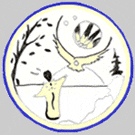| |
SSNS Home > Senior Years > Curricula 9 to 12 > Grade 11 > Canadian History
Grade 11 Canadian History
If you have negative feelings about high school history, you are not alone. Many of us endured the lectures, took copious notes, memorised the "facts" and then regurgitated them on a test. That method of instruction still exists today, but is gradually being replaced by more student-centred, activity-based strategies that make history classrooms much more exciting places to be.
It is this interactive model of instruction that we have chosen here. We want you to "think critically" about and "do" history rather than being "told" about it as in the past. This approach won't replace the provincial curriculum, or even address every unit of study there; instead, the focus will be on a few topics especially designed to engage teachers and students in a process of historical discovery. With that in mind, read on!
-
Becoming Engaged in Learning History For more information on the interactive approach, read John Fielding's " Engaging Students in Learning History." Although Fielding writes specifically for teachers, his ideas are relevant for everyone, because we are all students in some sense. In a clearly written and easy-to-read essay, he discusses (1) the importance of engaging and developing "historical imagination" and (2) the best strategies to achieve it.
-
First Steps. Before choosing a project in Canadian History, you need to ask: Why is it important? What can I learn from it? Where does it fit in the larger picture? To get a sense of that larger picture, become familiar with the provincially-mandated curricula, specifically the "Grade 11 (Senior 3): Canada - A Social and Political History (1988)." See the Manitoba Education, Citizenship and Youth Department website for an overview of this course and for a detailed outline of its contents. Note that the Grade 11 Canadian History curriculum is under revision and "soon to be replaced"; however, until that occurs, this course outline is still the officially approved provincial document.
-
Unsolved Mysteries in Canadian History encourages the kind of historical research that develops "historical imagination." In addition to offering real historical mysteries for you to "solve," it helps to hone your problem-solving and critical thinking skills. The site provides many supports - student handouts, teacher's guides, and information on key concepts in historical thinking, to name but a few. You can also develop your own "unsolved mysteries" using the instructional model demonstrated in each of the mysteries and share them with others across the country. It's a wonderful site and it's free! Don't miss it!
- Remembrance Day activities are not-to-be-missed opportunities. Find out why you should get involved.
-
-
Vimy 2017 offers students of Canadian History a chance to attend the centenary of the battle of Vimy Ridge in 2017.
Last updated:
October 5, 2010

This work is licensed under a
Creative Commons Attribution-Noncommercial-Share Alike 2.5 Canada License. |
![]()









